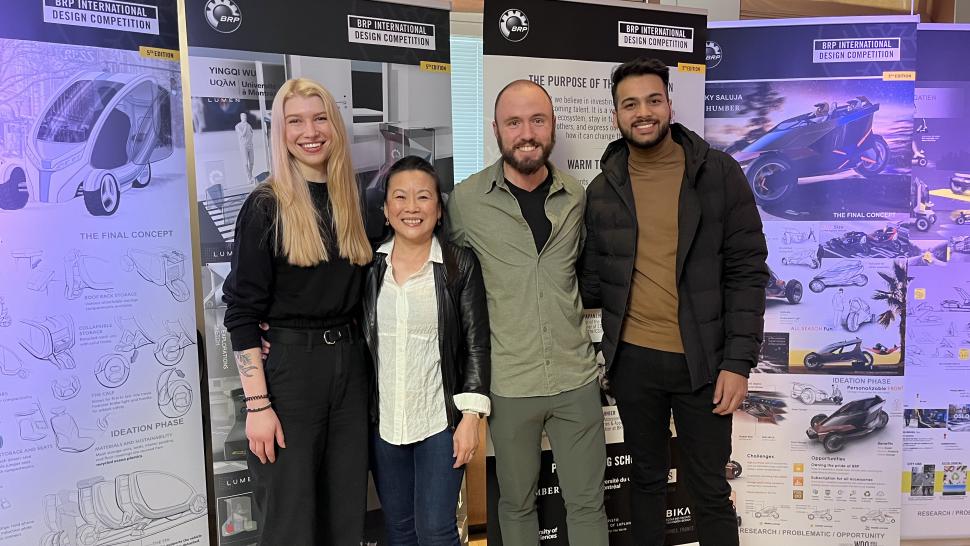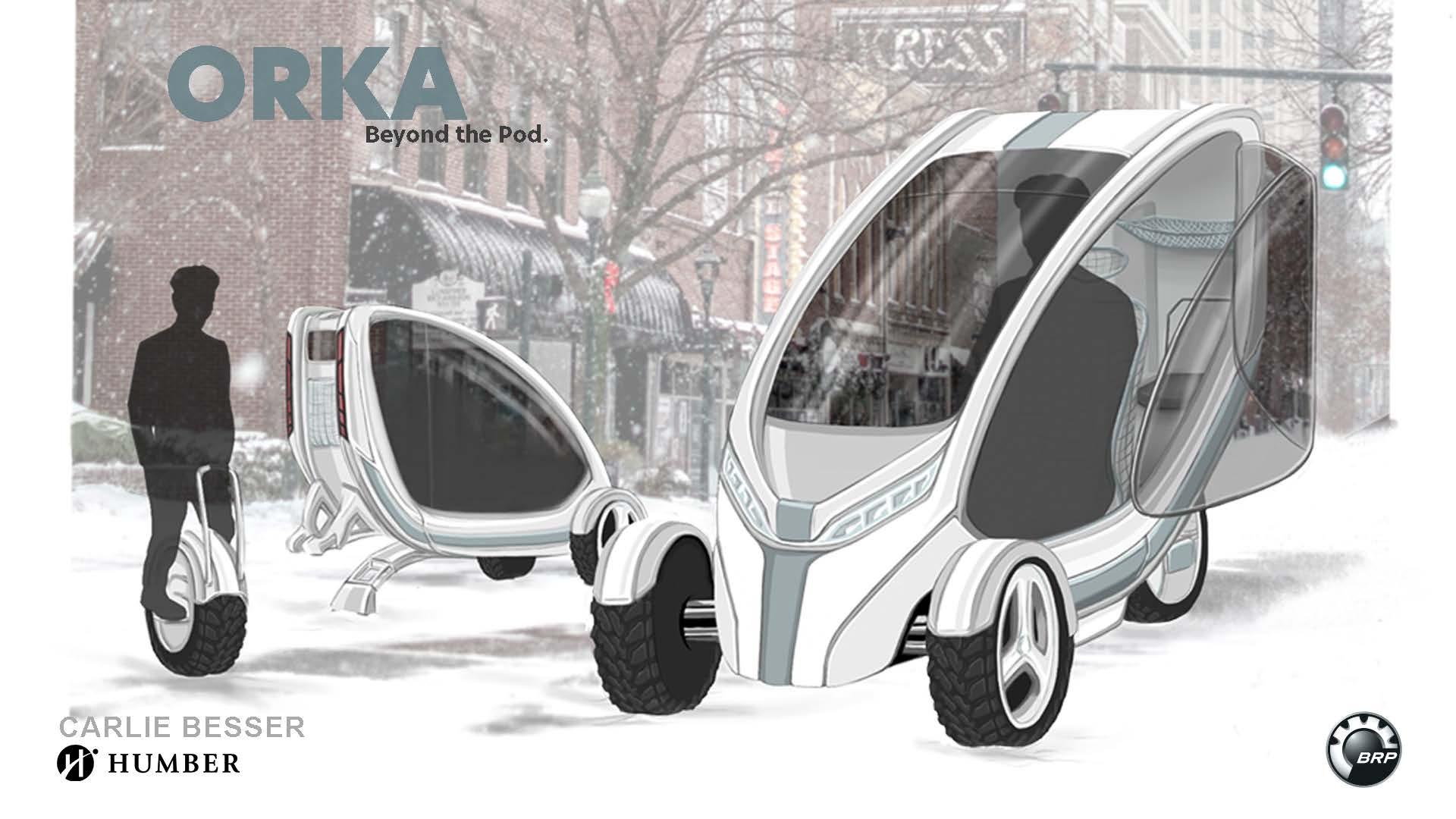
Humber students in the Bachelor of Industrial Design program were invited to participate for the second time in an international design competition organized by Bombardier Recreational Products (BRP).
Humber was one of just six institutions invited to participate.
Professors Catherine Chong and Ken Cummings led the team with support from graduate Dylan Torraville. They worked with third and fourth-year students to learn from each other, share resources and create groundbreaking designs.
The project focused on developing future solutions for an attractive electric vehicle to meet environmental goals and keep users warm and comfortable in cold climates. BRP’s project brief called for “An alternative personal transportation device, capable of accommodating an occasional passenger and offering storage space for daily needs. The product has to facilitate access to and from cities, in a safe and sustainable manner, endorsed by the World Design Organization, as participants are challenged to consider and incorporate some of the United Nations’ Sustainable Development Goals in their concepts.”
The goal of the team was to create an exciting, sustainable mobility solution to meet Canada’s environmental commitments in 2035. Students developed forward-thinking concepts that met challenging winter conditions north of the 45th/50th parallel and addressed mobility challenges in these harsh winter climates.
The designs used sustainable materials and embraced green manufacturing. They also reflected the latest technology and improved user-experience design.
Ricky Saluja and Carlie Besser were finalists in the competition and were invited to present their designs to a panel of judges at Arctic Design Week, which was held in Rovaniemi, Finland, in March. The weeklong forum, which was celebrating its 15th anniversary under the theme Better Future with Arctic Smartness, promotes northern design expertise and business while inspiring designers, students, scientists and artists from around the globe.
“This has been an incredibly rewarding journey in forging a positive working relationship with BRP,” said Chong. “The students had an amazing experience connecting with the international design community. BRP has been a great host in organizing an unforgettable Lynx ride allowing the participants to experience riding through the frozen river and snowy forest and crossing the Arctic Circle.”
Throughout the semester, students received on-campus feedback from BRP's design team members who shared their professional experience and time to work with the students.
Besser’s concept is a three-wheeled vehicle capable of winter driving she dubbed “Orka.” Her design has a special feature called the “Calf,” which can be detached and ridden independently from the vehicle.

“The opportunity to speak with designers and members from BRP, the World Design Organization and the design community was eye opening regarding the possibilities of what is achievable and possible after graduation and in the future in a career in design,” said Besser.
Since work on the competition began, Besser has been offered an internship with BRP in Valcourt, Quebec while BRP in France has reached out to Saluja for further discussions about his portfolio and the possibility of employment.
“The BRP project has been one of the most important parts of my career development on a personal and professional level,” said Saluja. “Appearing as one of the finalists is a big confidence boost. This recognition makes me feel like a better designer. I know that if you do your best, you are sure to get results to be proud of and that's what the BRP project did for me.”
Besser added she’s thrilled to have received the internship offer and lauded the program for providing her with the skills needed to be successful with her design.